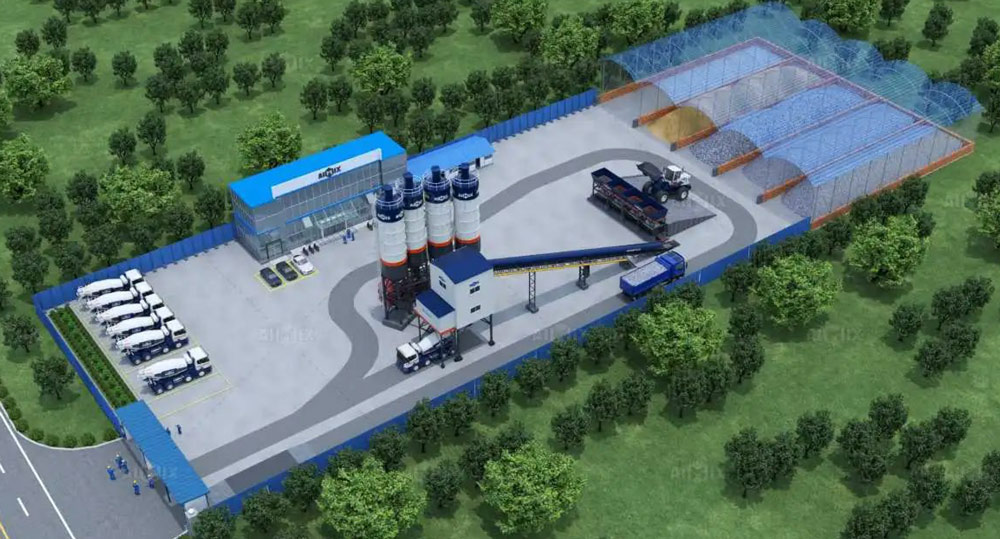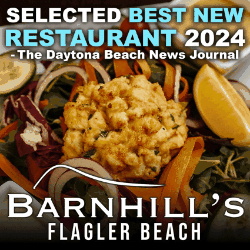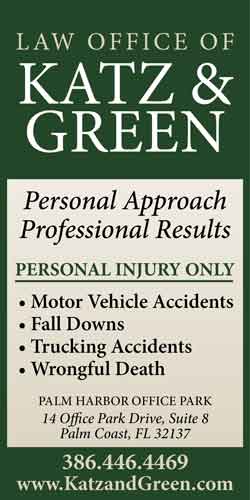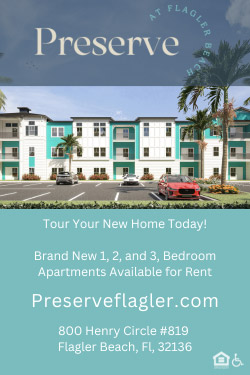
Citing air and water pollution, the Palm Coast Planning Board rejected a request to rezone 37 acres on Hargrove Grade on the west side of U.S. 1 to heavy industrial so a national company could build a concrete mixing plant there.
The land includes 10 acres of wetlands, overlaps within the protection zone of two public well sites that furnish water to the city, and would not be far from acreage zoned for a hospital or a medical building. The batch plant would be the only one in Palm Coast. Those factors, along with traffic, noise and pollution, played into the reasoning of board members and members of the public who opposed the rezoning.
The board attempted two motions–one to deny the application, one to approve it. Both failed on tie votes.
One planning board member was concerned about “significant amount of particulate matter” that would penetrate lungs, along with the potential vulnerability of water sites. Board Chair Sandra Shank was especially concerned about wastewater from the site seeping into wells, and the site being close to what could be a future hospital or medical complex. (The hospital site is actually closer to U.S. 1, while the proposed rezoning is on acreage further west.)
“Palm Coast wants more jobs, and they want more commercial, but we want clean stuff,” Dave Ferguson, a planning board member and a former City Council member, said. “We want data centers. We want hospitals, we want computers, we want everything but anything that puts anything in the air, the water, the ground.” He described himself as torn by the proposal, but ended up voting against it.
A representative of Autohaus of Palm Coast on Hargrove Grade called the rezoning an “existential threat to our thriving, specialized economy.” The representative described a high-end auto repair shop. The plant would introduce “three critical non-negotiable threats,” among them particulate matter and “abrasive dust” that would sweep into open bays and cause her operation to grind to a halt. She also cited “perpetual congestion” from constant cement truck traffic.
“We have built a successful, specialized automotive ecosystem here, supporting local jobs and contributing significantly to the economy of Palm Coast,” the Autohaus representative said. “Approving a cement plant will directly dismantle what we painstakingly created.”
Public input was otherwise limited to one other opponent of the proposal, but a board member noted that “the community has brought up some very valid points that I think should be considered,” and that any approval of the rezoning should be accompanied with conditions.
The acreage is currently vacant scrubland and zoned for Light Industrial and Warehousing. It is part of the Hargrove Industrial Park.
The proposal isn’t dead. It will go before the City Council for two readings of the rezoning ordinance, where the council may either take the Planning Board’s rift in consideration, or override it and approve the application. The city administration is recommending approval.
In January, the Bunnell City Commission, in a close vote, rejected an application to rezone 1.4 acres at the end of Hibiscus Avenue in that city to allow for the construction of a plant there, even though a much larger, adjacent parcel was already zoned heavy industrial. Neighboring residents complained that the plant would generate noise and traffic to intolerable levels. Bunnell’s Planning Board had rejected the proposal in a unanimous vote.
Palm Coast Planning Board members not favoring the rezoning on Hargrove Grade spoke of similar concerns, which the applicant’s representative attempted to refute point by point.
The site had been designed and permitted for a 221,365 “luxury car garage condos.” That never materialized.
The land owner then got interest from SRM, the national concrete manufacturing company that runs some 560 plants in 23 states. It was founded in 1999, the year Palm Coast was incorporated. The Palm Coast plant would employ 30 to 50 people with wages of $75,000 to $100,000, according to Curt Wimpée, the applicant’s representative. He said the company would invest $12 million to $15 million in the facility.
“So they’re not just coming in and trying one new, they have a very sophisticated operation,” Wimpée told the planning board. “Everything that they do as far as the particulates and stuff like that, and everything that goes with a concrete batch plan, they’ve done this, they’ve figured it out, and they’re very good at it, but very environmentally friendly.”
The plant would use approximately 10,000 gallons of water per day, working five and a half days a week, and drawing water from wells. There are two existing public well sites whose 500-foot wellfield protection zone overlaps with the property proposed for the batch plant. So the applicant would be required to obtain a St. Johns River Water Management District Consumptive Use Permit to ensure that its own well, which would be drilled some 200 feet down, will not impact the two public wells.
Wimpée conceded that airborne particulates “is one of the only concerns that anybody’s had with concrete batch plants,” but the company is “very serious” about addressing them.
The motion to deny the application cited the city’s land development language that a land use “must not create an unreasonable hazard, nuisance or constitute a threat to the general health and welfare of the safety of city’s inhabitants.” The city attorney, however, said information culled from the internet to support claims about particulates was not the kind of “substantial, competent evidence” that would hold up in court.
Shank, who seconded the motion after passing the gavel, said she did so not “based upon opinion, or emotion.” She rejected the claim that the site was far enough from the future hospital site. The motion failed, as did its successor motion to approve.
“Based on all the conversation and the information that I think we’ve all learned here, I think there is a sensitivity and a concern that” the industrial zoning proposal, board member Suzanne Nicholson suggested, may have “some adverse effects in the surrounding developments. And so when this goes to city council, I would advise the applicant to take into consideration everything you’ve heard here with regard to health, environment, the neighborhood, in terms of what’s going to be developed in the future, what’s there now, so that there is some commitment with regard to the applicant, to take those things into consideration.”
![]()




























Jf says
Plumper Palm Coast leaders at be. How about you start turning down new housing growth? I would love for one just one commissioner tell me that growth isn’t a problem in Palm Coast. If you truly care about THE PEOPLE YOU SERVE you will half all new building until you fix the traffic problems among many other things. I was in a commission meeting a few months ago back spoke to the commission and to my surprise they all looked shocked like we don’t have any issues.
Enough is enough!! says
Pretty soon the noxious fumes from people breathing will be banned!! You all know there are three in bunnell off of US1 and never have I ever seen a puff of smoke from one.
Dennis C Rathsam says
Jf, Boy did you hit the nail on the head! P/C sold its soul to the devil. Not only does traffic sucks, the water bill takes the cake! MOE LARRY & CURLY could made a better plan. My nieghbor, 82 years young, called me saying her bill was $145.00 dollars! One person!!!!! We all should stop paying this rediculas prices, they,LL cry bloody murder…They cant evict the entirer city. It’s time to push back folks, we are all getting SCREWED!
No jobs here !! says
Everyone complains there are no jobs here other than retail and fast food BUT when industry wants to build in an industrial park we get a big NO.
because someday in the very distant future there MIGHT BE a hospital.
These city people are out to lunch
Larry says
Yay! Thank you to the planning board. This was an excellent decision. Yes, Palm Coast needs businesses, but not toxic polluting industries.
celia pugliese says
Hooray for a common sense Planning Board. Thank you Mr. Stancel you care fort us the residents! Now lets go to lobby council and mayor as they have the last word and should be a NO!
We need you Mike says
Another polluting industrial complex requesting overriding zoning to contaminate constituents inside city limits, all just for special interest $. And our corrupt board is actually considering it, it’s like they aren’t happy unless they are causing us cancer and destroying property value. Praying Mayor Norris saves the city once again, if not for him we would be an industrial waste pit
Glenn says
Glad I moved from Palm Coast. It is by far the worst city I ever lived in traffic over population ,high utilities ,high insurance is the pits!
Don says
This city has no guts whatsoever. They keep turning down industry that will pay hundreds of thousands of dollars in taxes, while building tens of thousands of homes that probably pollute way more then these industries. They want the seniors OUT! and are pandering to the tree huggers all the while tearing down hundreds of acres of trees for urban sprawl. The builders association owns the city council.
Critical Eye says
What Bull Shit!!! The people of Flagler County especially Palm Coast need jobs! A cement plant is NOT more carcinogenic than other industries.
For all you dumb shits that are scared to step outside stay inside your bubble and get yourself a hazmat suit and wear it outside.
I agree” push back” people, stop paying these fools running our city, they need a dose of their own medicine. For those that agree with them LEAVE!!! YOU ALL HATE EVERYTHING ANYWAY. YOU’RE ALL LIKE A PIMPLE ON THE ASS OF SOCIETY !!! GET OUT!